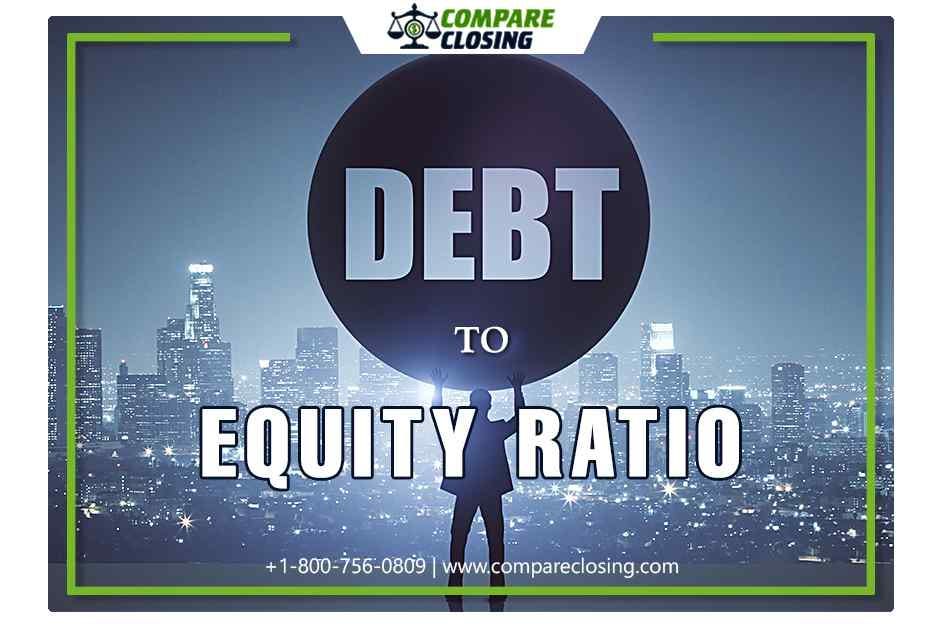
About Debt to Equity Ratio
When a company’s financial leverage is evaluated and calculated by dividing a company’s total liabilities by its shareholder equity it is called the debt-to-equity ratio.
The debt to equity ratio is an important yardstick used in corporate finance. It is a measure to understand how much does a company finances its operations through debt versus wholly-owned funds.
In the event of a business downturn, it reflects the ability of shareholder equity to cover all outstanding debts.
All the information needed for the debt-to-equity ratio can be found on a company’s balance sheet. The balance sheet equation is:
Assets = Liabilities + shareholder equity
In a balance sheet, some categories containing individual accounts would not be considered debt or equity as per the traditional sense of a loan or the book value of an asset.
Because the ratio can be twisted by retained earnings or losses, intangible assets, and pension plan adjustments, to understand a company’s true leverage more research is needed.
Analysts and investors will often modify the D/E ratio in the primary balance sheet so it is more useful and easier to compare between different stocks as there is a lot of ambiguity in some of the accounts.
By including short-term leverage ratios, profit performance, and growth expectations analysis of the D/E ratio can also be improved.
Ways to calculate the D/E ratio
Debt to equity ratio and other financial metrics can be tracked through a variety of software by business owners.
Microsoft Excel provides a balance sheet template to automatically calculate financial ratios. When evaluating a potential investment opportunity, a company’s D/E ratio can be calculated without the aid of templates.
What does the debt to equity ratio show?
It measures a company’s debt to the value of its net assets, it is used to measure the extent to which a company is taking on debt for leveraging its assets.
When the D/E ratio is high it is considered highly risky, showing that the company has been aggressive in financing its growth with debt.
If a lot of debt is used to finance growth, the company could potentially generate more earnings compared to without that financing.
Shareholders should expect to benefit when the leverage increases earnings by a greater amount than the interest.
And share values may decline when the cost of debt financing outweighs the increased income generated. The market conditions are responsible for variance in the cost of debt.
Because they tend to be larger accounts the changes in long-term debt and assets have the greatest impact on the D/E ratio in comparison to short-term debt.
Other ratios can be used if the investors want to evaluate a company’s short-term leverage and its ability to meet debt obligations that must be paid over a year or less.
For example, an investor will use a cash ratio instead of a long-term measure of leverage such as the D/E ratio if they need to compare a company’s short-term liquidity or solvency.
Cash ratio = cash+ marketable securities/short term liabilities
Or current ratio = short term assets/short term liabilities
Modifications to the debt-to-equity ratio
The shareholders’ equity portion of the balance sheet is the same as the total value of assets after deducting liabilities, but it is not the same thing as assets minus the debt associated with those assets.
By modifying the D/E ratio into the long-term D/E ratio this issue can be resolved. With this approach, an analyst can focus on important risks.
Because short-term debt will be paid in a year or less these are still part of the overall leverage of a company, and aren’t as risky.
For instance, company X has $1 million in short-term payables and $500,000 in long-term debt another company Y has $500,000 in short-term payables and $1 million in long-term debt.
Although both have $1.5 million in shareholder equity, they have a D/E ratio of 1.00. Yet the second company Y is riskier in reality.
Compared to long-term debt short-term debt is much cheaper, and it is less sensitive to shifting interest rates so the second company’s interest expense and cost of capital are higher.
Long-term debt will need to be refinanced, if interest rates fall, thereby increasing the costs further. Rising interest rates would be good for the company with more long-term debt, but if the debt can be redeemed by bondholders it could be disadvantageous.
The debt-to-equity ratio for personal finances
In personal financial statements also the D/E ratio can apply, where it is also known as the personal D/E ratio.
In personal finance, equity means the difference between the total value of a person’s assets and the total value of his liabilities. The code for personal D/E ratio calculation is:
Debt to Equity = total personal liabilities/personal assets-liabilities
When an individual is applying for a loan the personal D/E ratio is used. D/E is used by lenders to evaluate that even if their income was temporarily disrupted how would the borrower be able to continue making loan payments.
Conclusion
The debt-to-equity ratio depends on the nature of the business and its industry. Debt to equity ratio below 1.0 is considered relatively safe, and ratios of 2.0 or more are considered risky.
Some industries have higher D/E ratios. It is a negative sign when a debt to equity ratio is low it shows that the organization is not taking advantage of debt financing to expand and grow.
https://www.compareclosing.com/blog/what-is-the-debt-to-equity-ratio/
Comments
Post a Comment